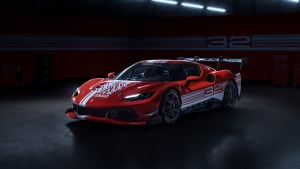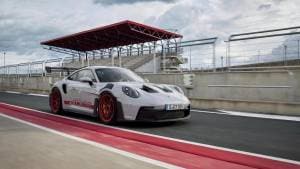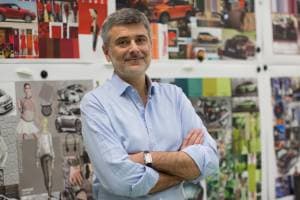Going green the EuroSpeedway
Who was Jack The Ripper? Where did Amelia Earhart disappear to? And what on earth happened to the crowds that once used to populate Sholavaram at those fabled races we have all heard so much about? Of life's many unsolved mysteries, these are the ones that I find myself pondering most often, leading to much furrowing of the brow and scratching of the head. Of course it is the last of these, owing to the fact that it is closest both to home and heart, that most concern us.
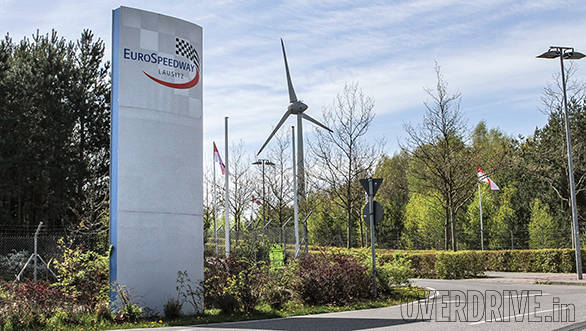
When the last car left Sholavaram in 1988, the howl of the engine growing softer and more distant, the haybales were packed away, the grandstands taken down, the last straggler left for good and the dust finally settled. Racing, it would appear, was over. Sholavaram, in the span of four decades had gone from being a World War II airfield, to a racetrack, to a place where only ghosts of racecars past resided. If the trees could talk, they'd tell the story of scorching races, blistering competition and camaraderie that has been unheard of ever since. But they cannot. And so Sholavaram remains, shrouded in silence, Indian racing's graveyard. Decades have passed and racing has shifted to other tracks, with the Buddh International Circuit being the most high profile - both in terms of investment in the facility itself and the types of races it has hosted. It's no secret, though, that the JPSI group has lost money on the project, with day-to-day maintenance cost amounting to Rs 4 crore a year. Not to mention the exorbitant licence fee for Formula 1, an event that they have now had to strike off their calendar.
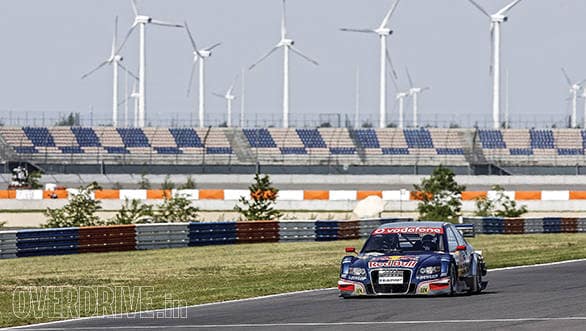
A good four decades before the first racecar turned a wheel at Sholavaram though, some 5000km to the west, racing was already in full swing at another rather unusual location. The AVUS, which expands to Automobil-Verkehrs und Übungsstraße, and translates to automobile traffic and training road, was a public road in Berlin turned into a racetrack. For what was essentially just two long straights connected by banked hairpins, the AVUS attracted crowds like no other, aided in no small measure by the fact that it was a frighteningly fast circuit and that it was smack bang in the middle of the city. The mere mention of the track immediately conjures up images of Bernd Rosemeyer in the Auto Union Streamliner on the treacherous banking - racing at its fastest, scariest best. And from that first race on September 24th, 1921, racing continued at the AVUS all the way until 1998, before it switched back to being a fulltime public road. Racing then shifted to the EuroSpeedway at Lausitz. And the crowds followed.
Perhaps I have chosen a rather unfortunate day to visit the EuroSpeedway - the track is calm and silent. The only real movement I see is the blades of the circuit's giant windmill turning gently clockwise. There's a KTM X-Bow school session that is meant to be happening at the track at that very minute, which has, much to the annoyance of all parties concerned, been called off by the Mayor of that particular region due to the fact that it is Easter weekend and no sporting activity shall be allowed at such a time. The good folk at the track's press office are hard at work - doing damage control and also wrapping up before the four-day holiday. And so I'm handed the keys to the grandstands and allowed to wander through the best seats in the house unhindered.
 The whole track can be seen from anywhere in the main grandstand, as can the solar carport and the wind turbine and biogas plant
The whole track can be seen from anywhere in the main grandstand, as can the solar carport and the wind turbine and biogas plant
When construction for the EuroSpeedway began in 1998, it was acknowledged that the track was an ambitious project and an expensive affair all at once. Costing approximately 140 million Euro (of which 120 million was sponsored by the state), the Lausitzring (which is what it was called back then) was unique in that it set out to be a model racetrack allowing for every sort of motorsport activity to happen at one single venue. There was a 3.2km long SuperSpeedway, a 4.3km grand prix circuit, a 4.2km long motorcycle circuit, and the possibility of joining all the circuits together to form an 11km long endurance track. Standing high up at the main grandstand that has the capacity to seat 25,000 people (with a further 95,000 people being able to sit around the tri-oval) I realise that what I've heard is true. You can see the entire circuit from here, which, as far as racetracks go, is something of an achievement. Hans-Jorg Fischer, the former head of marketing and communication of the Nurburgring, who had then taken over as CEO of the Lausitzring project had been determined that the track would be spectator-friendly. And that his determination has borne fruit is evident.
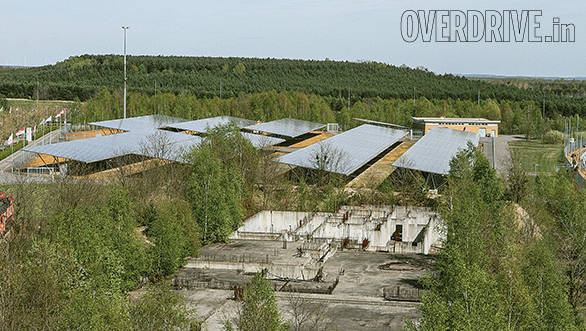
But the EuroSpeedway was built not only to encourage racing and sporting activities, but also to promote business and lead to an increase in economic activity in the Lusatia region. Merely sitting on 434 hectares of land, waiting for racing to happen, wasn't going to achieve the goals that the finance ministry had set out for the track. And so when, in 2009, the track was eventually given over to new owners Förderverein Lausitz e.V in order to ensure that the business end of things could be handled properly, renewed attempts were made in order for the emptied coffers to start filling up. Other than a full calendar of races from CART to DTM to WSBK, there were also regular training schools and driving academies set up. Safe driving training schools, rollerblading and cycling nights, Motocross academies and more - all began taking place at the EuroSpeedway. The venue's facilities were even made available for business conferences, and for various celebrations - like Oktoberfest!

The need to make the track less reliant on the outside world, however, was something that the circuit's new managing directors - Josef Hofmann, Josef Meier, Hermann Meier - were keen on. And thus, Project Green Lausitzring was born - to ensure the entire facility was converted into a self-sustaining entity. The first step was building a solar carport. This involved a roof being built over the VIP car parking lot, and fitted with solar panels that generate around 943MWh of energy that can either be used to charge electric cars within the lot itself, power the circuit, and also generate enough energy for 240 four-person households. The second step was to build a biogas plant within the circuit where bio waste and recyclable material from the track's cafeteria are converted into compost and subsequently thermal energy that is used by the EuroSpeedway and the adjacent DEKRA technology centre. And the third and most impressive measure put in place is the 200 metre high wind turbine, I'm told it's the world's most powerful wind turbine to date, that looms large over the EuroSpeedway, generating approximately 17,000MWh of electricity annually. Essentially, the EuroSpeedway manages to meet all its electrical and thermal needs by itself, while other tracks around the world have to spend on energy, saving the circuit money every single day. Admirable given that racetracks are usually only associated with consumption of energy and depletion of resources.
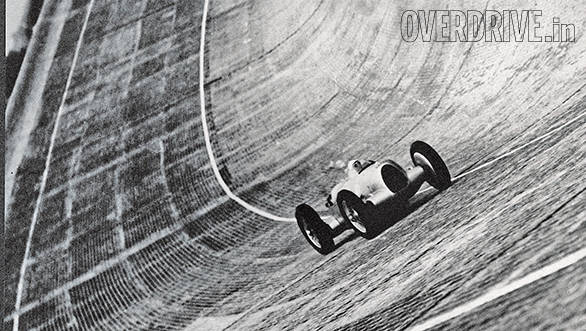
Somehow the EuroSpeedway and energy resources seem to go hand in hand all through - the track itself was built on the site of a former coal mine. But between 2000, when the first race was held there, and 2009 when Project Green Lausitzring came into being, the ambitious circuit lost money. Accusing them of shortsightedness would be a little like accusing Karl Benz of being myopic for not inventing the automobile sooner. However, had it been a green venture from the word go, things might have been different.
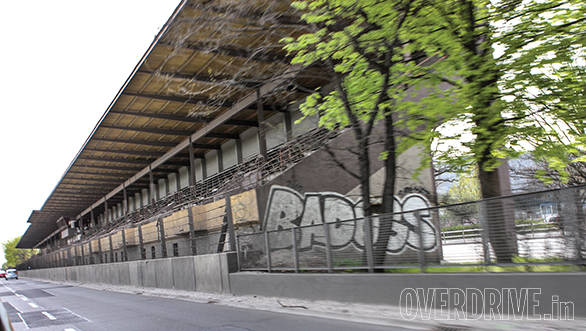 The old banked AVUS where Bernd Rosemeyer once raced is now a public road with the race control tower and grandstands still preserved
The old banked AVUS where Bernd Rosemeyer once raced is now a public road with the race control tower and grandstands still preserved
Closer home though, the Buddh International Circuit currently seems to be real estate that is vegetating. Formula 1 has left, seemingly for good - the biggest problem track seems to have. The trouble is that while the JPSI built the track as a part of a larger sports city, the ultimate goal of the circuit was to host Formula 1. And in building a facility that could host the multi-billion dollar circus run by ringmaster Bernie Ecclestone, everything else that a circuit could do and should do, was blindsided. Other than open track days and manufacturer testing, the BIC has hosted no more than a handful of races in its three years as a fully operational racetrack. Maintaining a racetrack that has no racing, spending money on keeping alive a terrific facility that is not being used for its primary purpose - time, energy and resources spent and precious little gained. The need of the hour, then, is to reevaluate the facility both in terms of what events it can host, and perhaps also consider converting it into a facility that can sustain itself. Given that every other aspect of motorsport is now toeing the green line - circuits should too.
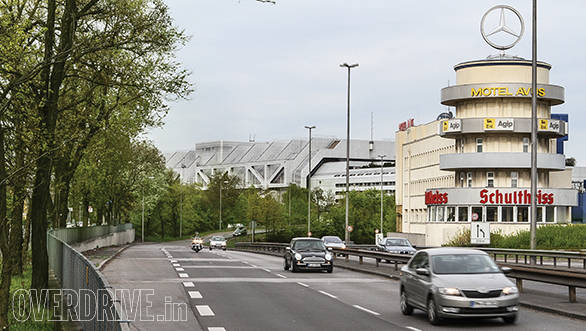
While driving back from the EuroSpeedway, we find ourselves on the erstwhile AVUS track, going past the old race control tower and grandstands, with the image of that giant wind turbine still imprinted rather firmly in our minds. It's impossible not to marvel at the sheer scale of progress that has been made. And to hope that the winds of change in racing are soon felt in this part of the world too.
